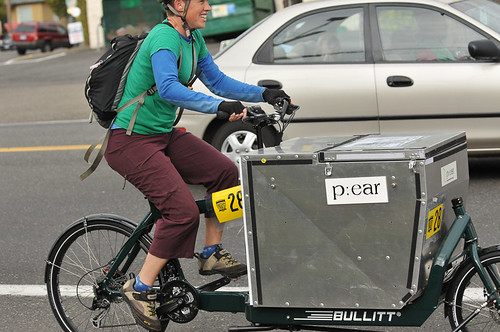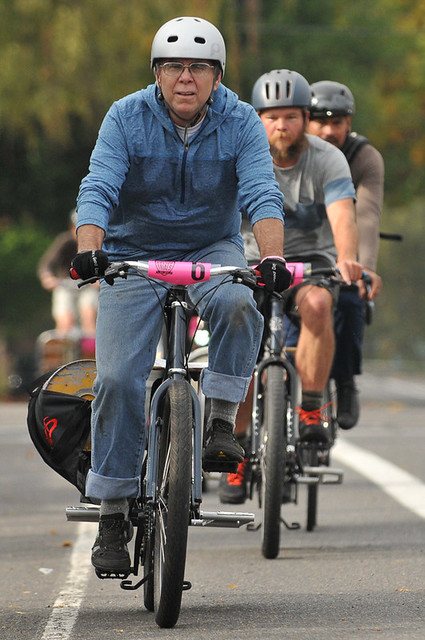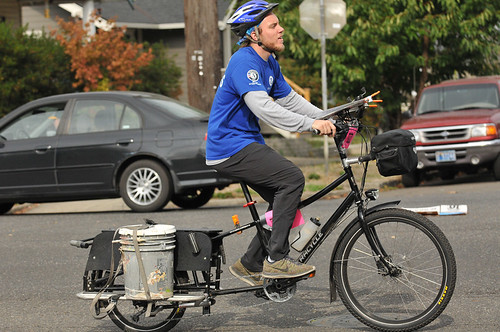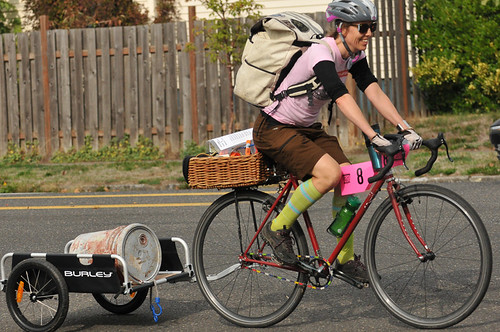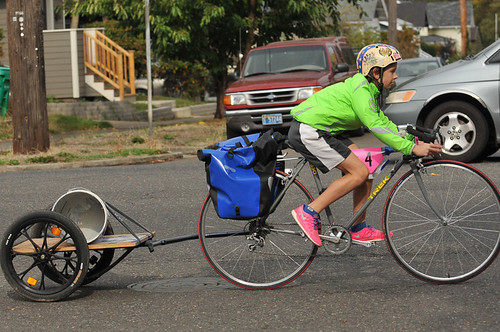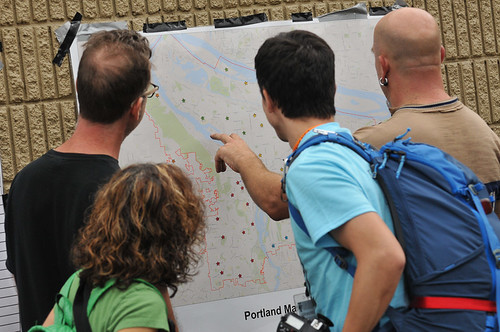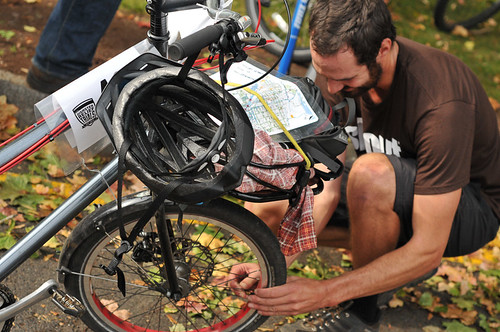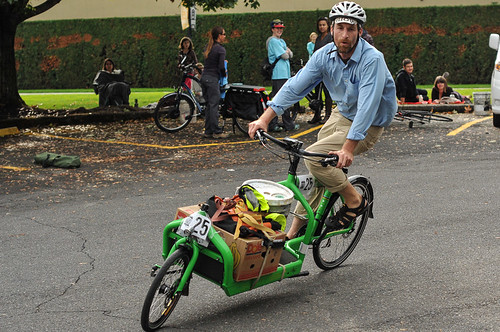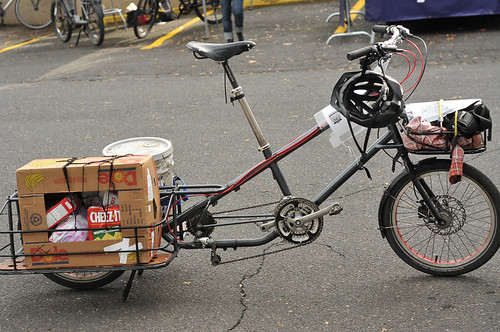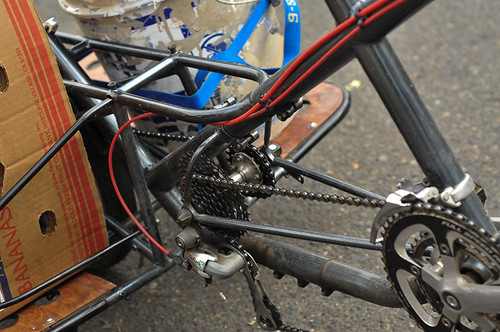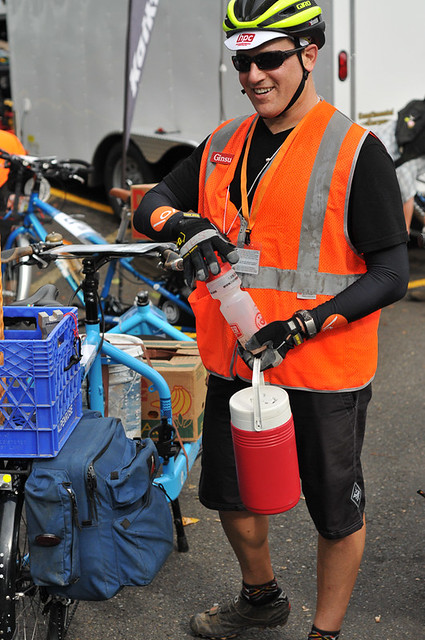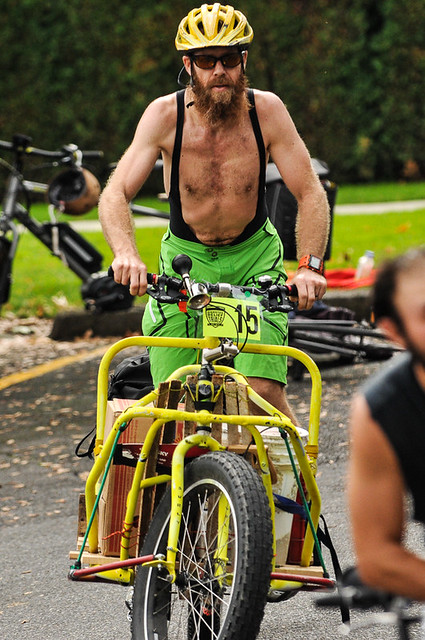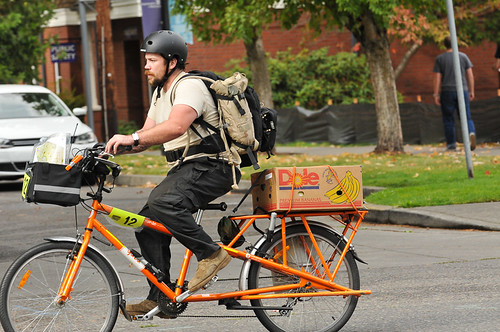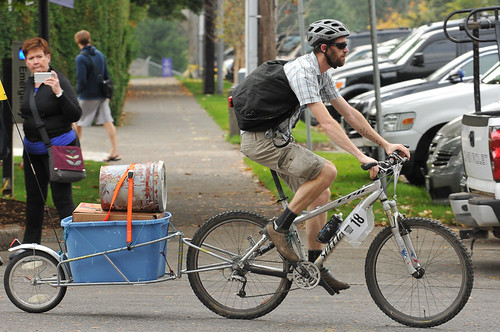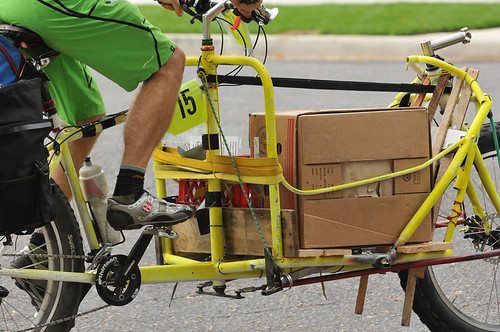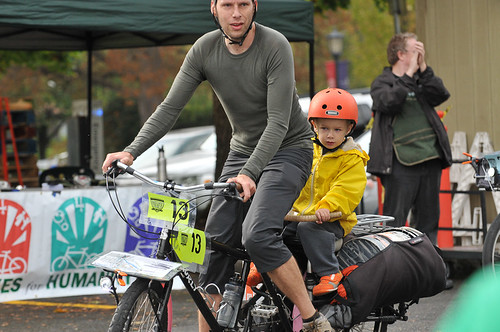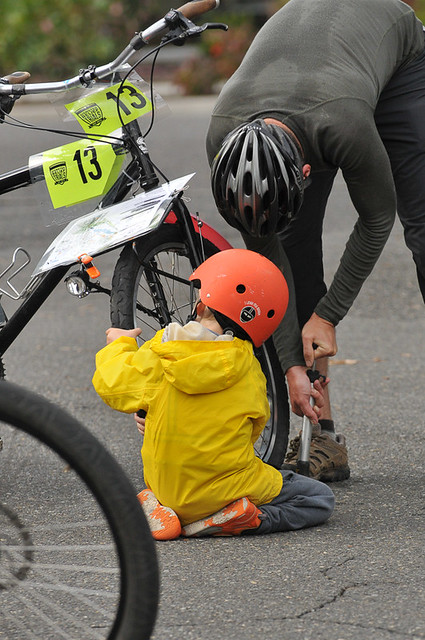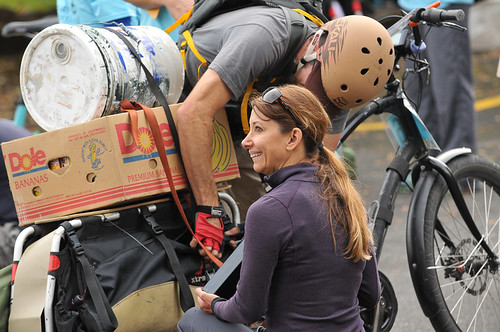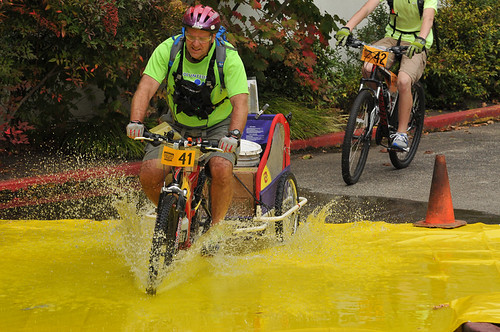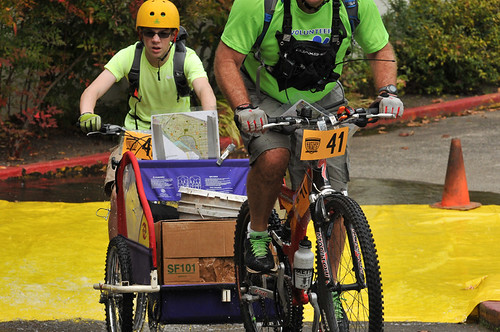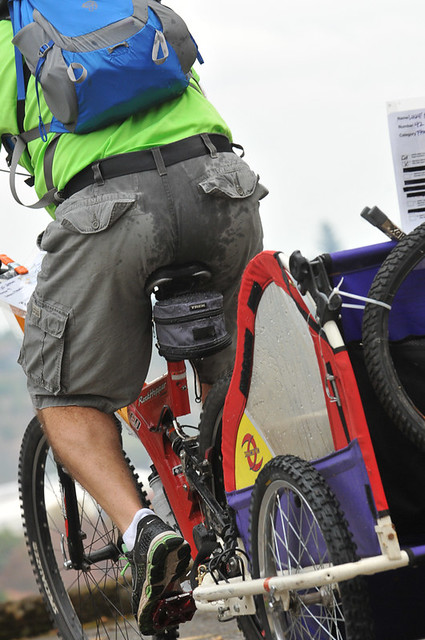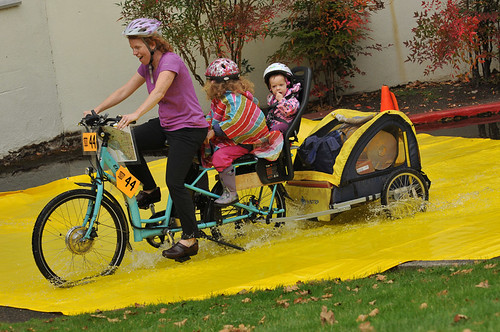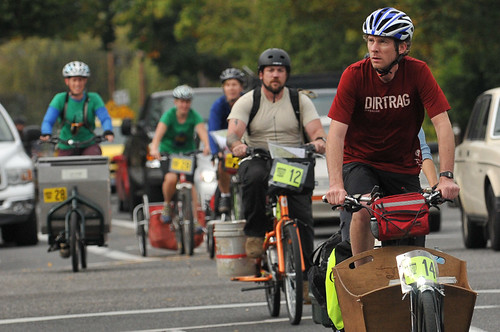
(Photos © J. Maus/BikePortland)
With interest in earthquake preparedness at an all-time high, the timing could not have been better for the fourth annual Disaster Relief Trials. The event, which was based at University of Portland, aims to demonstrate that cargo bikes can be an effective way to administer aid and help rebuild our communities after a large quake or other natural disaster.
45 competitors showed up today to test their mettle and equipment. They faced 10 challenging checkpoints scattered throughout the city. They had to lift their bikes up and over a five-foot wall, ride through deep water, carry heavy and awkward loads, traverse steep dirt trails, and more. Depending on category, the riders had to pedal, push, and lift their loads between 15 and 30 miles.
Portlander Mike Cobb came up with the concept five years ago and now DRT events are held in Seattle, Eugene and San Francisco. Bend will join the list next year. Cobb was inspired by the tragic events that unfolded after the 7.0 magnitude earthquake in Haiti in 2010. “I was embarrassed as a human to watch what happened in Haiti,” he shared with me at the event today, “And the biggest tragedy wasn’t the quake itself but the secondary impacts. We have such amazing innovations when we’re motivated… like going to the moon or something; but all those people in Haiti had to suffer just because we’re not focused on it.
“Decision-makers need proof that bikes are not just toys.”
— Mike Cobb, event organizer
So I thought, what can I do?”
Cobb, a former messenger known for amazing feats of bicycling like doing the 375-mile off-road Oregon Outback on a fixed gear, turned to what he knows and loves: bikes. “I wanted to do something decentralized and human-powered.”
The DRT is a way to showcase what cargo bikes can do. If we as a society are to ever embrace them as serious disaster-relief tools, people in power must shift their perceptions. “Decision-makers need proof that bikes are not just toys,” Cobb says.
Today’s event definitely got the point across. In fact, the City of Portland’s Planning and Preparedness Manager Jonna Papaefthimiou participated in the Family category (see photos of her in action below).
Here’s a breakdown of the different rider categories:
Family Category Rider (~15 miles, ~20lbs cargo + your kids)
The Family class are families that are ready. With kids in tow, their cargo will take care of their needs; going the distance to make sure their family is safe! In the notes, please tell us how many kids will be on your bike and you’ll get a time bonus per kid!Citizen Category Rider (~30 miles, ~50lbs cargo)
The Citizen class are everyday people who are prepared for disaster. They might not have the heaviest cargo, but they have what they need to make sure they are ready.Resilient Category Rider (~30 miles, ~75lbs cargo)
The Resilient class are everyday people who are ready to help. Their cargo will to take care of their needs, but don’t worry, they have a little bit extra to help their community. They are ready to go that extra distance to help others in their community! Riders in this class should anticipate large and awkward cargo.Responder Category Rider (~30 miles, ~100lbs cargo)
The Responder class will carry the heaviest cargo, they are the people who will be going the longest distance because in a real disaster, the responders will be taking care of themselves and others. Riders in this class should anticipate large and awkward cargo.E-Assist Category Rider (~30 miles, ~125lbs cargo)
The E-Assist class will cover more ground and haul more cargo (125 lbs) since they come with a built in booster. Riders who can prove (with a picture) that they have an off-grid charging option will get a time bonus. Bike path legal e-assist bikes only please.
For more of today’s action, check out the photos and captions below…
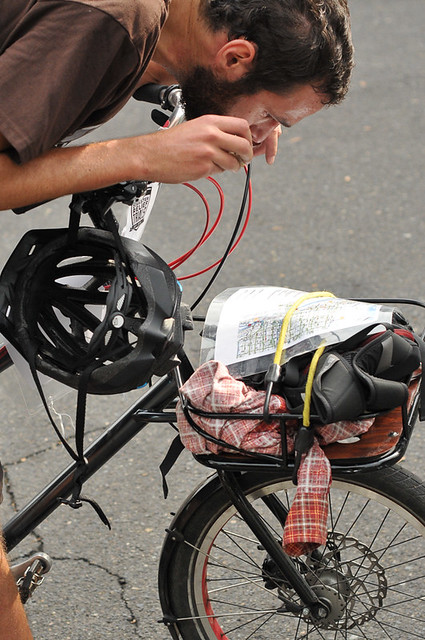
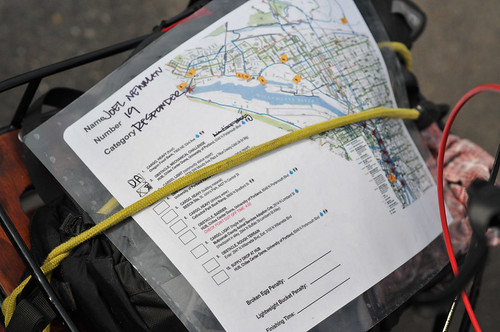
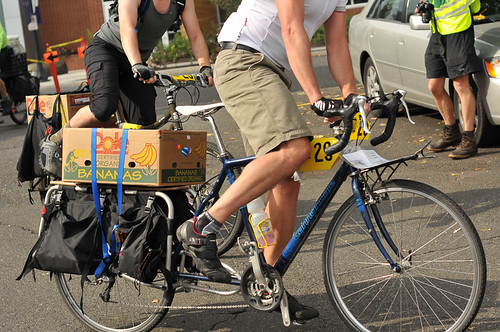

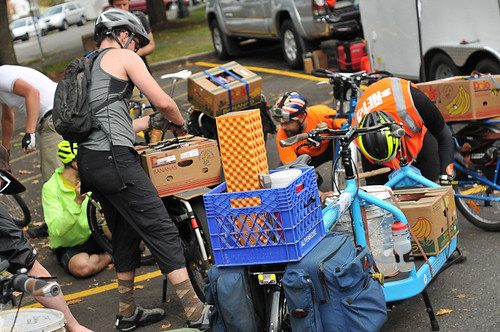
Advertisement

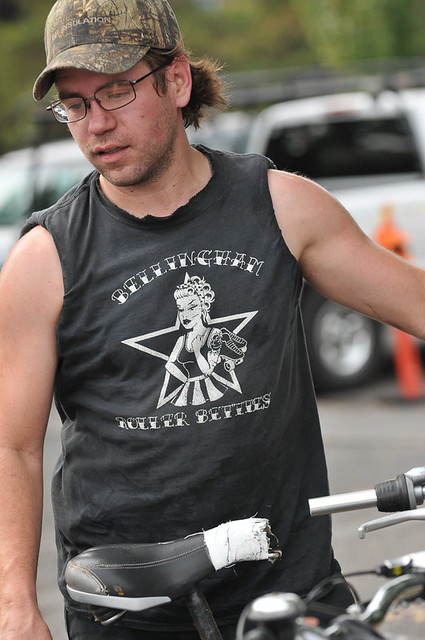
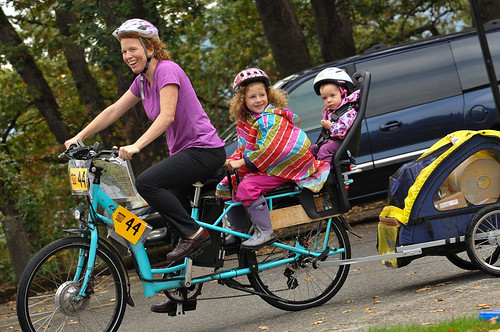
When the Big One does strike, Portland’s deeply rooted cargo biking culture, our respect for human-powered mobility, and the type of community building and skills on display at events like this will benefit us all. Thanks to all the participants, organizers, volunteers and sponsors!
Read more on this topic in our “bikes and disasters” archives.
— Jonathan Maus
jonathan@bikeportland.org
(503) 706-8804
@BikePortland



